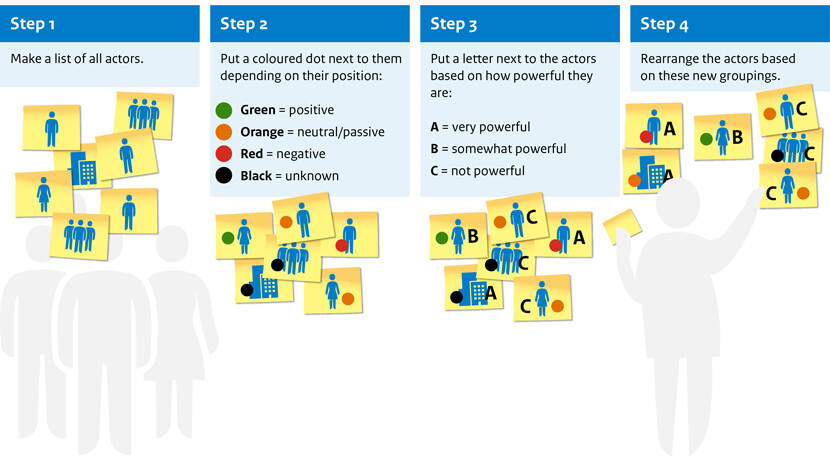Analysis on position and interest
This analysis will help you identify the powerful players and show how they fit in to the process. You can choose whether you score them based on position or interest.

Tips
- Write the letters in the colour of the dot to see the various relationships at a glance.
- Sometimes it may be useful to distinguish between an organisation and the person you are in contact with.
Understanding the results
A lot of green As
This is a good thing. It means there are powerful parties (‘ambassadors’) who will work with you, and you can expect little resistance. By informing these parties and making working agreements with them in a project-based approach, there is a lot you will be able to achieve.
A lot of red As
This means you’re in for a challenge. A lot of powerful parties believe that it is not in their interest to work on the policy. This will have consequences for the rest of the process and the strategy you choose, and it calls for negotiation and careful process management. Your interests may be incompatible, but is it still possible to conceive of a win-win situation?
A lot of orange and black
You’ll need to do further research to find out the parties’ position vis-à-vis the policy and whether they’ll present a risk further down the line. It may be possible to sway neutral/passive actors (orange), but it’s difficult to anticipate the attitude of those who are unknown (black). Find out what their interests are and see how you can involve them in the process moving forward. Keep in mind that projects involving numerous parties and policy processes with multiple steps, rounds and phases are constantly changing. In light of this, you will need to carry out the force-field analysis more than once during the project.